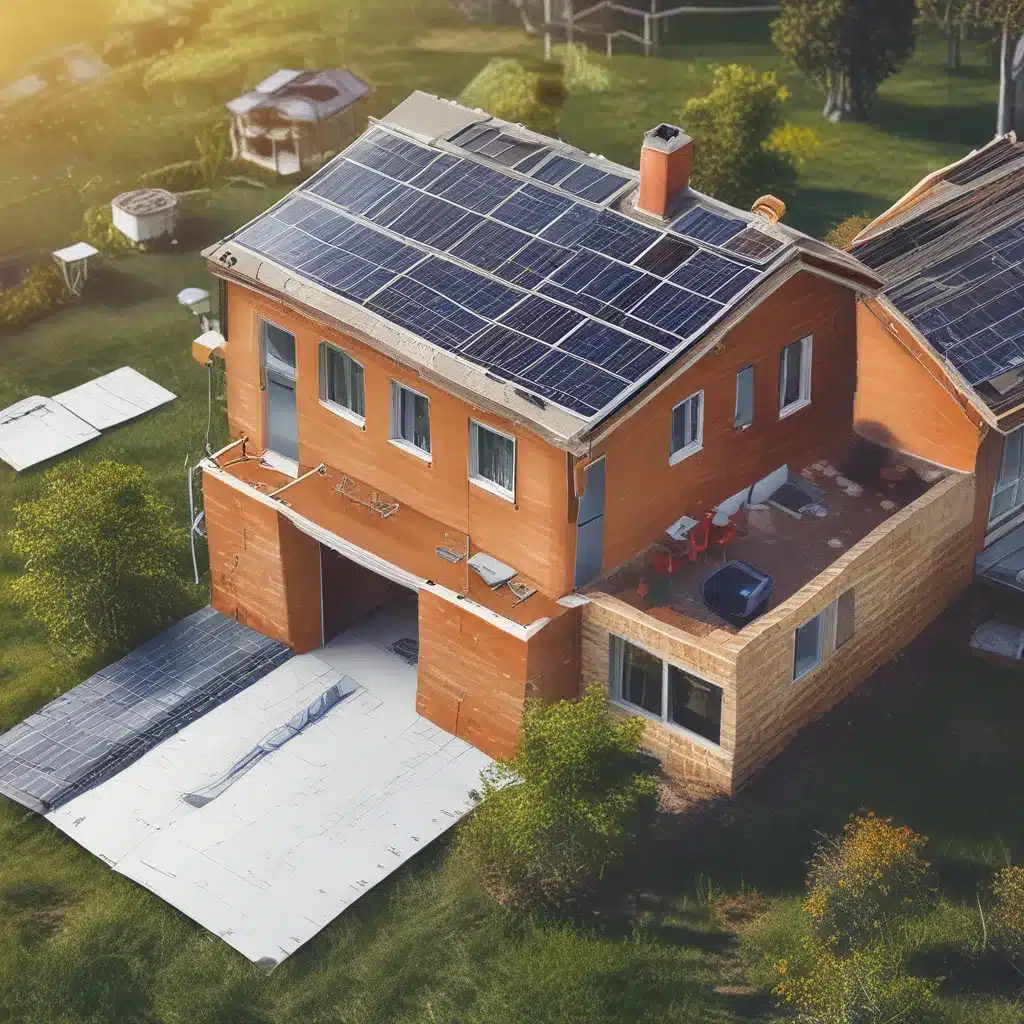
The Math Behind Solar Savings
As someone who’s always been intrigued by the prospect of going solar, I can attest that the upfront costs of installing a rooftop system can feel daunting. But here’s the thing – if you dig into the numbers, you’ll find that solar panels are actually a pretty savvy investment in the long run. In fact, Solar A Systems Inc. estimates that the average US homeowner can save around $46,000 over the lifetime of their solar panel system.
Now, I know what you’re thinking – “That’s great, but how do I actually calculate my potential savings?” Well, my friends, I’m about to break it down for you.
Determining Your Upfront Costs
The first step is to understand the initial investment you’ll be making. According to the data, the average cost of a residential solar system in the US is around $22,670 after the federal tax credit. This, of course, can vary depending on the size of your system, your location, and the specific equipment you choose.
To get a more accurate estimate for your home, I recommend checking out EnergySage’s solar calculator. Just plug in your address and a few other details, and it’ll give you a personalized breakdown of the costs and potential savings.
Calculating Your Annual Savings
Now, let’s talk about the juicy part – your annual energy bill savings. The average US household uses around 10,791 kilowatt-hours (kWh) of electricity per year and pays about $0.17 per kWh. That means the typical American family is spending around $1,834 annually on their electricity.
But here’s the best part – when you go solar, you can say goodbye to those pesky utility rate hikes. Your energy costs will be locked in at a consistent rate, which means you won’t have to worry about your bills skyrocketing year after year. In fact, based on the 10-year average electricity price inflation rate of 2.8%, the typical homeowner can expect to save around $1,500 per year on their electricity bills.
Determining Your Payback Period
Okay, so we’ve covered the upfront costs and the annual savings, but how long will it take for your solar investment to pay for itself? Well, that’s where the good old payback period comes in.
To calculate your payback period, simply divide the net cost of your solar system (after incentives and rebates) by your annual energy bill savings. For example, if your system costs $12,000 and you’re saving $1,500 per year, your payback period would be around 8 years.
Now, I know what you’re thinking – “8 years?! That’s a long time!” But here’s the thing – most solar panel systems are warrantied for 25 years or more, which means you’ll have at least 17 years of pure savings after you’ve recouped your initial investment. And let’s not forget, those savings will only continue to grow as electricity prices rise.
The Environmental Impact of Going Solar
But solar savings aren’t just about the money, my friends. When you install a solar panel system, you’re also doing your part to reduce your carbon footprint and contribute to a more sustainable future. According to the Environmental Protection Agency’s formula, a 6-kilowatt solar system can offset the emissions of about one fossil fuel-powered vehicle each year.
Imagine that – by simply putting some panels on your roof, you can effectively neutralize the environmental impact of one of your gas-guzzling neighbors. It’s like you’re the solar-powered superhero of your neighborhood, saving the planet one kWh at a time.
Factoring in Additional Benefits
But wait, there’s more! Going solar can also come with some additional perks that can further boost your savings. For instance, many states and municipalities offer tax credits, rebates, and other incentives to encourage homeowners to go solar. These can help offset the upfront costs and improve your overall return on investment.
And let’s not forget the potential impact on your home’s value. Studies have shown that homes with solar panels can sell for significantly more than their non-solar counterparts. So, not only are you saving money on your electricity bills, but you’re also potentially increasing the value of your biggest investment – your home.
The Bottom Line
So, there you have it – the math behind solar savings. When you crunch the numbers, it’s clear that going solar is a pretty smart move, both for your wallet and the planet. And with the continued advancements in solar technology and the ever-increasing costs of traditional electricity, the case for solar is only going to get stronger.
If you’re still on the fence about making the switch, I encourage you to check out Solar A Systems Inc. and see what kind of savings you could be looking at. Who knows, you might just become the next solar superstar of your neighborhood.


